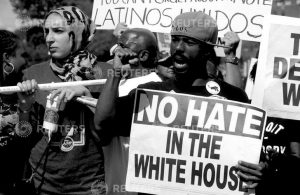US Criminal Justice Administration and Justice Access for minority

The Special Rapporteur was made aware of inequities in the sentence and incarceration rates for minorities in the US criminal justice system. Despite comprising just around 13 and 18 percent of the US population, respectively, African Americans and Hispanics account for almost one-third of each group in jails. Because of this, it has become increasingly difficult for those with criminal records to get employment and integrate into society. In the end, millions are basically denied access to voting rights and political participation [3, 4].
According to the Special Rapporteur, the criminal justice system is systematically set up to penalize minority of color in particular while favoring the rich and granting them pardons. Only the lowest elements of society are affected by so-called “fines and fees,” who bear the brunt of such punishments, making even minor offenses prohibitively expensive. This is due to the fact that they generate cash that helps to fund several activities in addition to the legal system [5, 6].
Another argument that may be made is that members of underrepresented groups like African Americans and Hispanics tend to be the poorest individuals in society who are trapped in this cycle of poverty. Even though they have not been proven guilty of a crime, about 500,000 people are held every day across the country because they are unable to pay bail. The cash bail system disproportionately affects minorities, especially Blacks and Hispanics; during the past 15 years, this has grown by a factor of more than two [7-10].
Hispanic men are nearly twice as likely as white men to be killed by police, and African American men are nearly three times as likely. To put a stop to such tactics, law enforcement needs independent and effective monitoring. In addition to other actions that need to be taken more consistently to lessen hostility toward particular minorities [11, 12].
In conclusion, Inequities in the sentencing and imprisonment rates for minorities in the US criminal justice system have been brought to the Special Rapporteurs attention. African Americans and Hispanics make up about one-third of each group in prisons while making up just around 13 and 18 percent of the US population, respectively. Due to criminal histories, millions essentially aren’t allowed to vote or participate in politics. The killings of African Americans by police, as well as acts of violence and cruelty committed against them, are very concerning. However, the fact that the medical community is quite organized in hiding these crimes is overlooked.
REFERENCE
[1] C. Lucas, “The sociolinguistics of sign languages,” 2001.
[2] D. Brentari, Sign languages. Cambridge University Press, 2010.
[3] D. S. Fonseca, “Reimagining the sociology of punishment through the global-south: Postcolonial social control and modernization discontents,” Punishment & Society, vol. 20, no. 1, pp. 54-72, 2018.
[4] A. J. Ritchie and J. L. Mogul, “In the shadows of the war on terror: Persistent police brutality and abuse of people of color in the United States,” DePaul J. Soc. Just., vol. 1, p. 175, 2007.
[5] K. S. Van Wormer and C. Bartollas, Women and the criminal justice system: Gender, race, and class. Routledge, 2022.
[6] B. Obama, “The president’s role in advancing criminal justice reform,” Harv. L. Rev., vol. 130, p. 811, 2016.
[7] P. C. Gandara and F. Contreras, The Latino education crisis: The consequences of failed social policies. Harvard University Press, 2009.
[8] R. D. Waldinger, Still the promised city?: African-Americans and new immigrants in postindustrial New York. Harvard University Press, 1999.
[9] M. Singer, “AIDS and the health crisis of the US urban poor; the perspective of critical medical anthropology,” Social science & medicine, vol. 39, no. 7, pp. 931-948, 1994.
[10] M. B. Kovera, “Racial disparities in the criminal justice system: Prevalence, causes, and a search for solutions,” Journal of Social Issues, vol. 75, no. 4, pp. 1139-1164, 2019.
[11] E. D. Gault, Networking the Black Church: Digital Black Christians and Hip Hop. NYU Press, 2022.
[12] J. S. Winterson, “Popular Music and Politics: In, Against and Beyond Identity,” University of Huddersfield, 2018.
